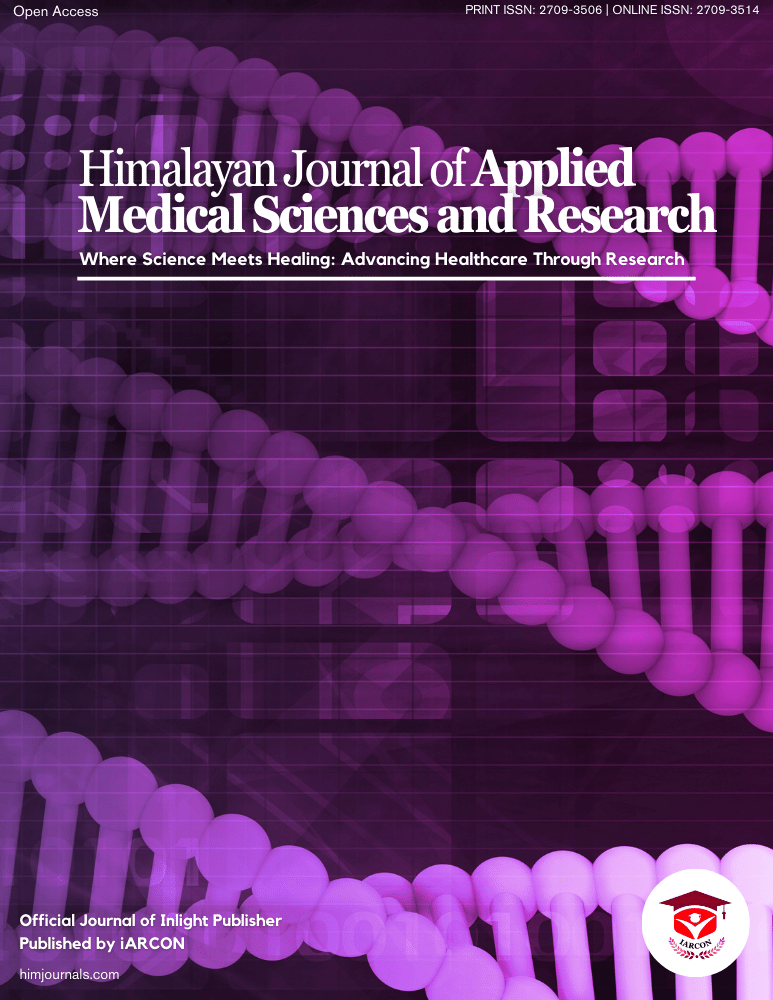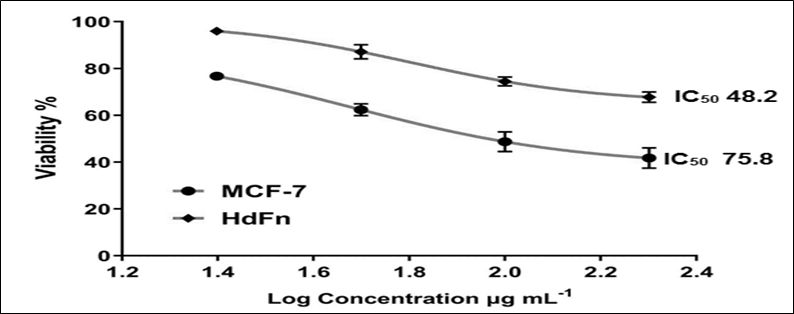Breast cancer is a type of malignant neoplasm that is caused when cells in the breast grow out of control and become tumorous. This type of cancer affects more women than any other type of cancer in the world, Moreover, metastasis is the major cause of death for cancer patients [1]. Chemotherapy and radiotherapy are both clinically expensive and can have side effects. In terms of side effects and cost-effectiveness, Medicinal plants may be the most effective alternative to chemotherapy drugs in addressing these concerns. Secondary metabolites with diverse biological activities are abundant in plants [2, 3]. Therefore, they have identified numerous bioactive compounds in plants that have significant therapeutic potential. Antitumor activity is just one of the many medicinal uses discovered for plant chemicals like flavonoids, carotenoids, alkaloids, and phenolics[4,5]. Verbena Officinalis L. is one of these plants. It is regarded as one of the medicinal traditional plants found in various countries around the world. Verbena officinalis, a plant from the Verbenaceae family, is commonly called pigeons’ grass, herb of grace, or vervain. It is a perennial erect herb, which grows to a height of about 25–100 cm, having toothed and lobed leaves. It is a flowing species that belongs to the Verbenaceae family, has medium-sized leaves, and is deciduous [6]. V. Officinalis contains glycosides, flavonoids, sterols, saponins, terpenoids phenolic acids,iridoids , and ursolic, according to the phytochemical qualitative analysis [7]. In vitro studies have shown that this plant's extracts have been employed for the treatment of many ailments such as gastric diseases, abrasion, skin burns,[8] wounds, thyroid problems, rheumatic pain,[9] asthma and cough,[10] amenorrhea, enteritis, acute dysentery,[11] expectorant and diuretic [12]. V. officinalis studied for its new important bioactivities including analgesic and anti-inflammatory,[13,14] antioxidant,[15] antifungal,[16] antibacterial,[17,18] anticancer,[19,20] neuroprotective,[11] antidepressant,[21] antiproliferative,[22] and, urolithiasis.[23] properties. V. Officinalis extract showed selective anticancer activity. The purpose of this study was to investigate the anticancer and antioxidant activities of an ethanol extract of V. O fficinalis grown in Iraq in vitro using the human breast cancer MCF-7 cell line.
Experimental Section
Plant Collection and Extraction
Leaf of V. Officinalis was collected from Baghdad, Iraq. The collected leaves were thoroughly washed using tap water. Following a thorough washing, the V. Officinalis leaves were dried in an incubator at 37 °C for one full night. A WileyMill grinder was used to grind the leaves into a fine powder (Standard Model 3). Employing the Soxhlet device and the procedure outlined in, [24] An ethanol extract with a purity level of 99.9% was produced. The round bottom flask was filled with 150 mL of ethanol and (50 g) fine powder. After 8 hours of extraction at 70 °C, the solvent extract was concentrated in a rotary evaporator at 40 °C. After collecting the dry extracts, they were weighed and placed in a refrigerator at 4 °C for long-term storage.
DPPH assays
The DPPH free radical scavenging test was used to evaluate the antioxidant activity of the ethanol extract. [25] Spectrophotometry (shimadzu) was used to evaluate the DPPH free radical scavenging activity. Colorimetric changes were measured at 517 nm. For each identified compound, a set of concentrations (25, 50, 100, and 200 μg ml-1) were used in this experiment. As a control, ascorbic acid was used. According to the percentage of free radicals.

Cell Culture
Michigan Cancer Foundation-7 (MCF-7) was derived from the pleural effusion of a year old female with carcinomas of the breast. [26] Dulbecco's Modified Eagle medium was used to culture the cells, which was supplemented with heat-inactivated foetal bovine serum (10%), streptomycin, penicillin (1%), and glutamine (2 mmol/L).
MTT cytotoxicity assay
V. Officinalis anticancer activity was determined using the MTT assay in the MCF7 cell line [27]. A stock solution of C. myxa was prepared by dissolving it in (DMSO), and then serial dilutions (25-200 μg/mL) were made from this solution. After 24 hours in a CO2 incubator, MCF7 cells were treated with extract (100 L) or doxorubicin (control). After 1–4 more hours of incubation, MTT (5 μg/mL) was added to each well. After discarding the media, DMSO was added to each well to dissolve the formazan crystals. Hidex Chameleon microplate reader absorbance was read at 575 nm (LabLogic Systems Ltd., Sheffield, United Kingdom)
Statistical analysis
To determine whether group variance was significant, a one-way analysis of variance (ANOVA) was used. The data were expressed as MeanStandard Deviation (SD), and statistical significance was determined using GraphPad Prism version 8.02.




